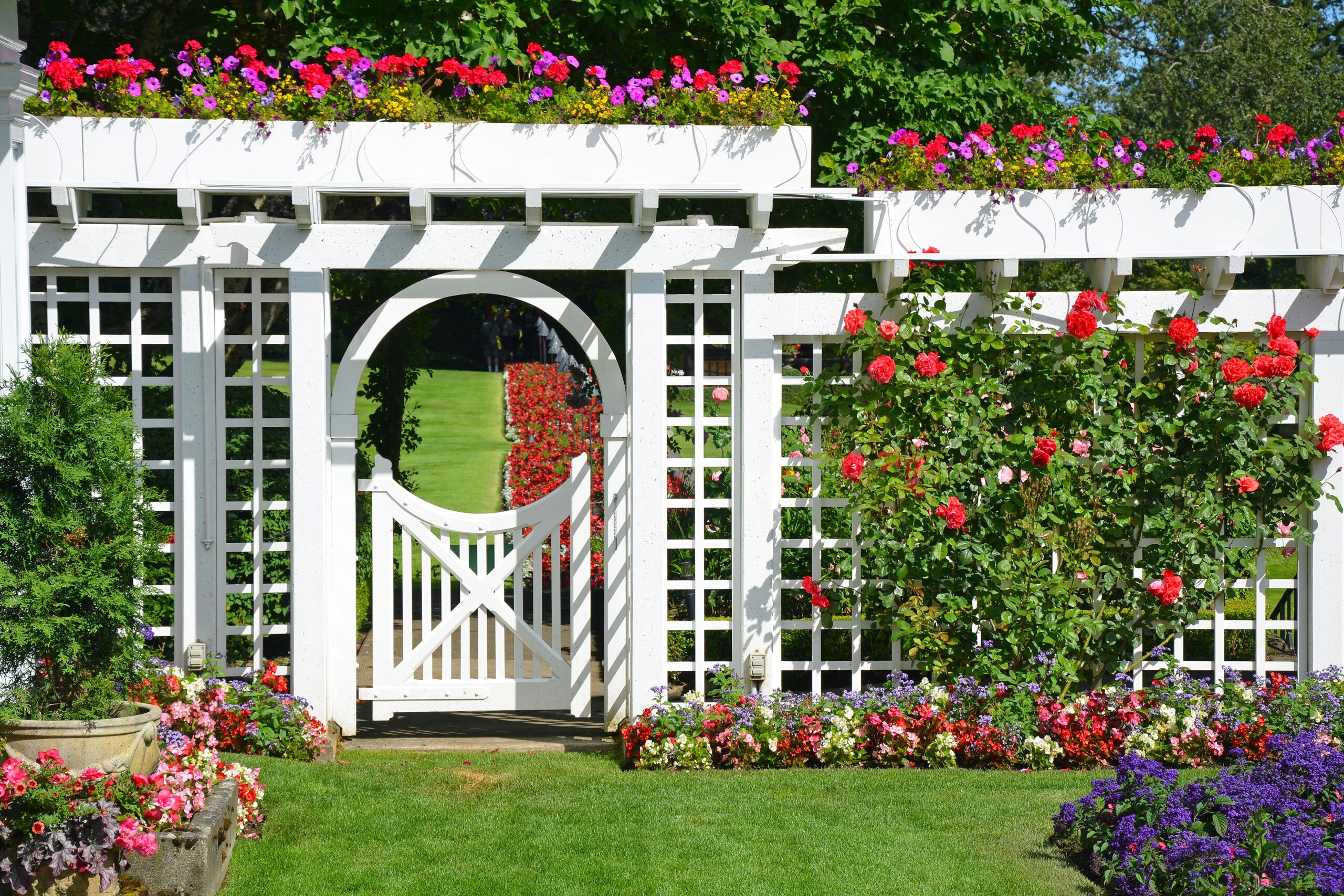Transforming your backyard into a personal oasis doesn’t have to break the bank. With a bit of creativity and some elbow grease, you can make your outdoor space more beautiful and functional. Here are 19 do-it-yourself (DIY) projects for a better backyard, from cozy seating areas to practical storage solutions.
1. Backyard Arbor Bench
An arbor bench is creates a focal point in your garden and provides a tranquil spot for relaxation, offering a space to sit and an area to grow climbing plants.
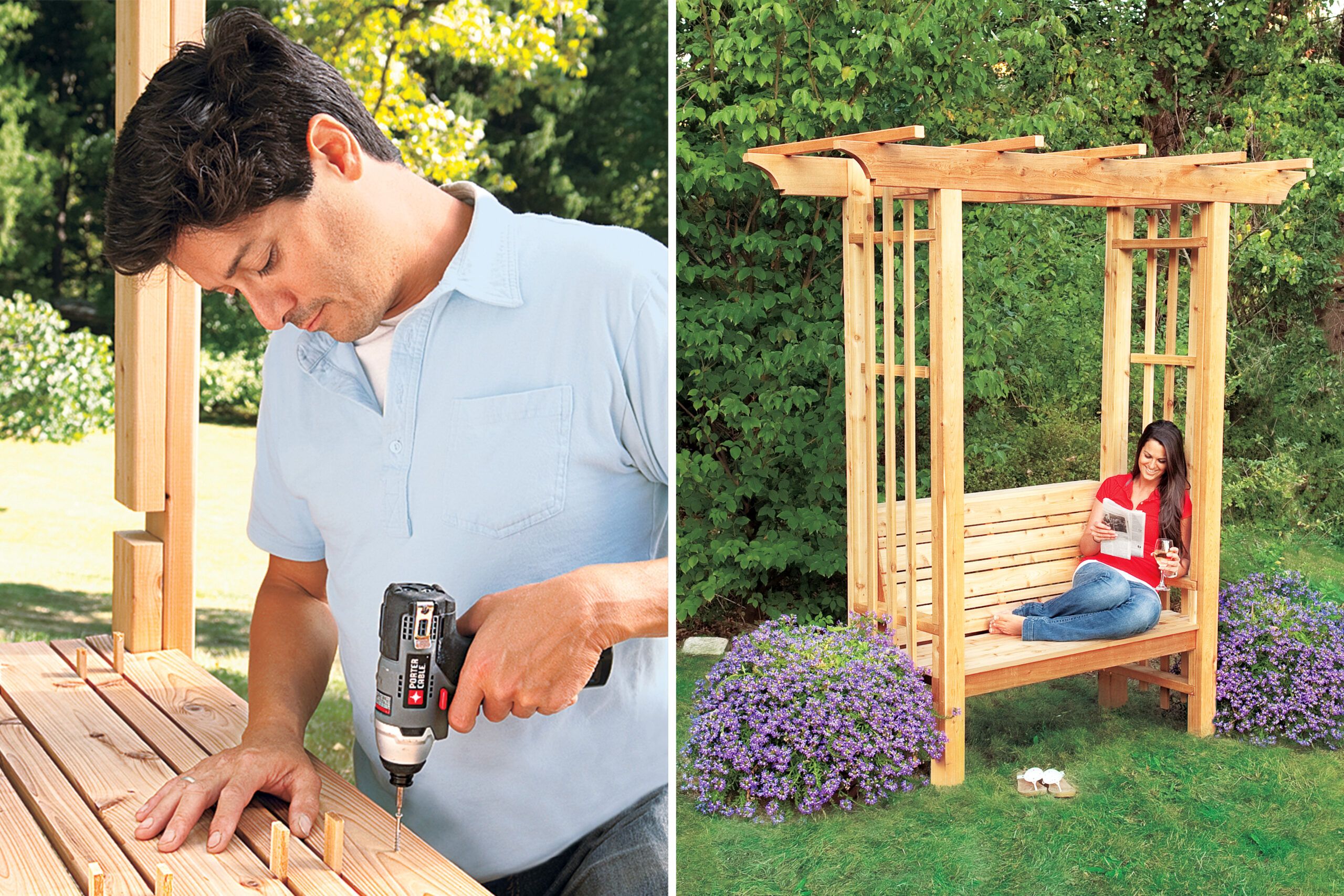
When building an arbor bench, we recommend using cedar because it’s naturally resistant to decay and insects. Incorporate design elements like profiled rafter tails and alternating board widths for the seat and backrest to improve visual appeal. Add trellis sides to support climbing plants while creating a sense of enclosure and privacy.
You can paint your arbor bench to complement surrounding flowers or leave it with a natural finish for a more rustic vibe. Add a cushioned seat or colorful throw pillows to bump up comfort and style.
See “How To Build an Arbor Bench” for full step-by-step instructions.
2. Garden Tool Shed
A well-organized garden tool shed is a must for serious gardeners. It provides a dedicated space to store and protect your tools from the elements, extending their lifespan and keeping your yard tidy.
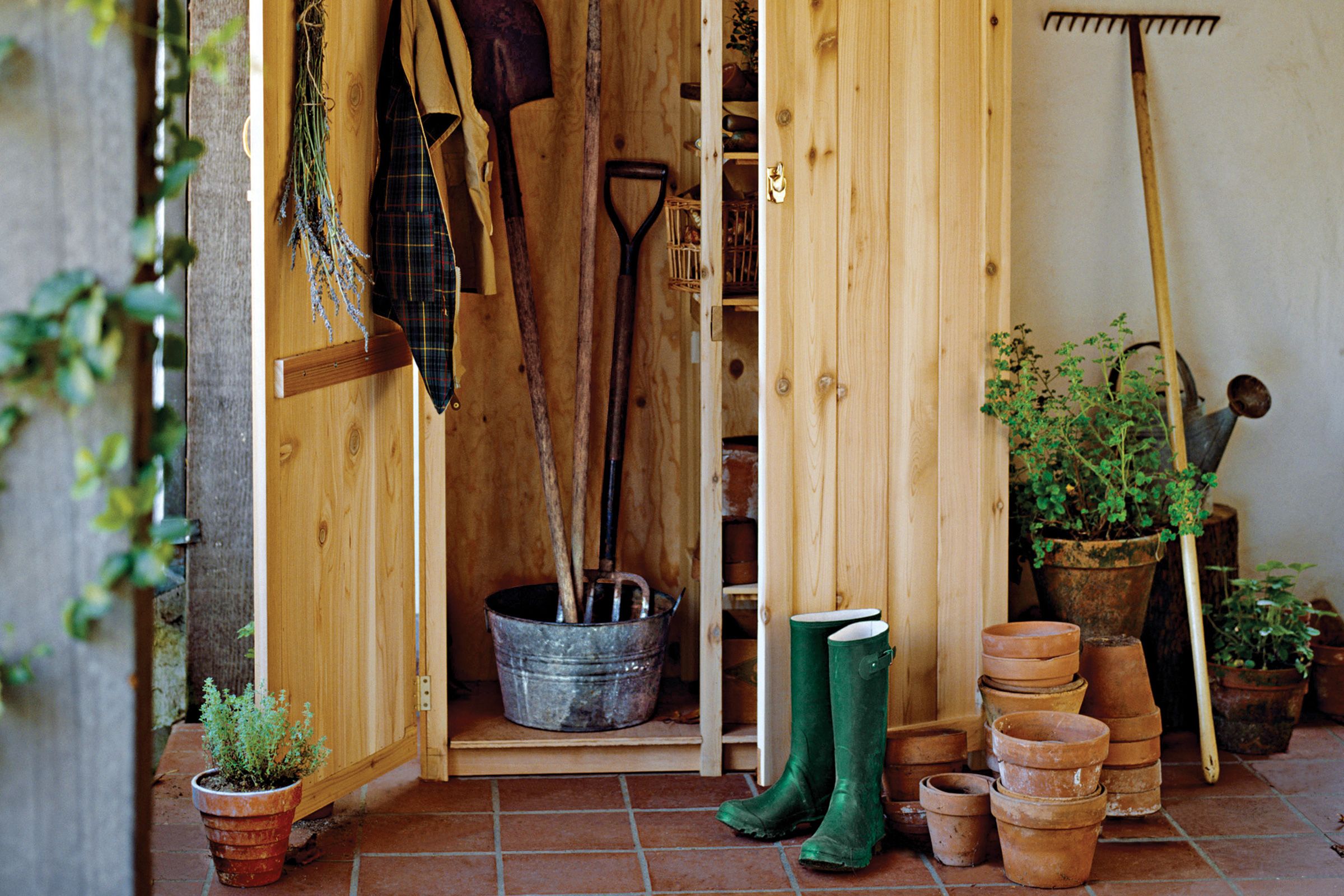
Like arbor benches, cedar is a great choice for a tool shed because it’s durable and naturally resistant to rot. You can opt for off-the-shelf lumber for a weekend project or choose a panelized kit for quicker assembly. A lean-to design is particularly space-efficient, fitting conveniently against your house near the patio or garden area.
Add windows to your shed to allow natural light inside. Painting or staining your shed can give it a polished look, and adding decorative accents like shutters or a weather vane can personalize your space.
Consider incorporating features like adjustable shelving, pegboards for hanging tools, and a potting bench to maximize functionality. Make sure you have proper ventilation to prevent moisture buildup and protect your tools from rust.
See “All About Garden Sheds” for inspiration and design ideas.
3. Patio Fire Pit
A fire pit can make your backyard into a cozy gathering spot, perfect for entertaining friends and family or enjoying quiet evenings under the stars.
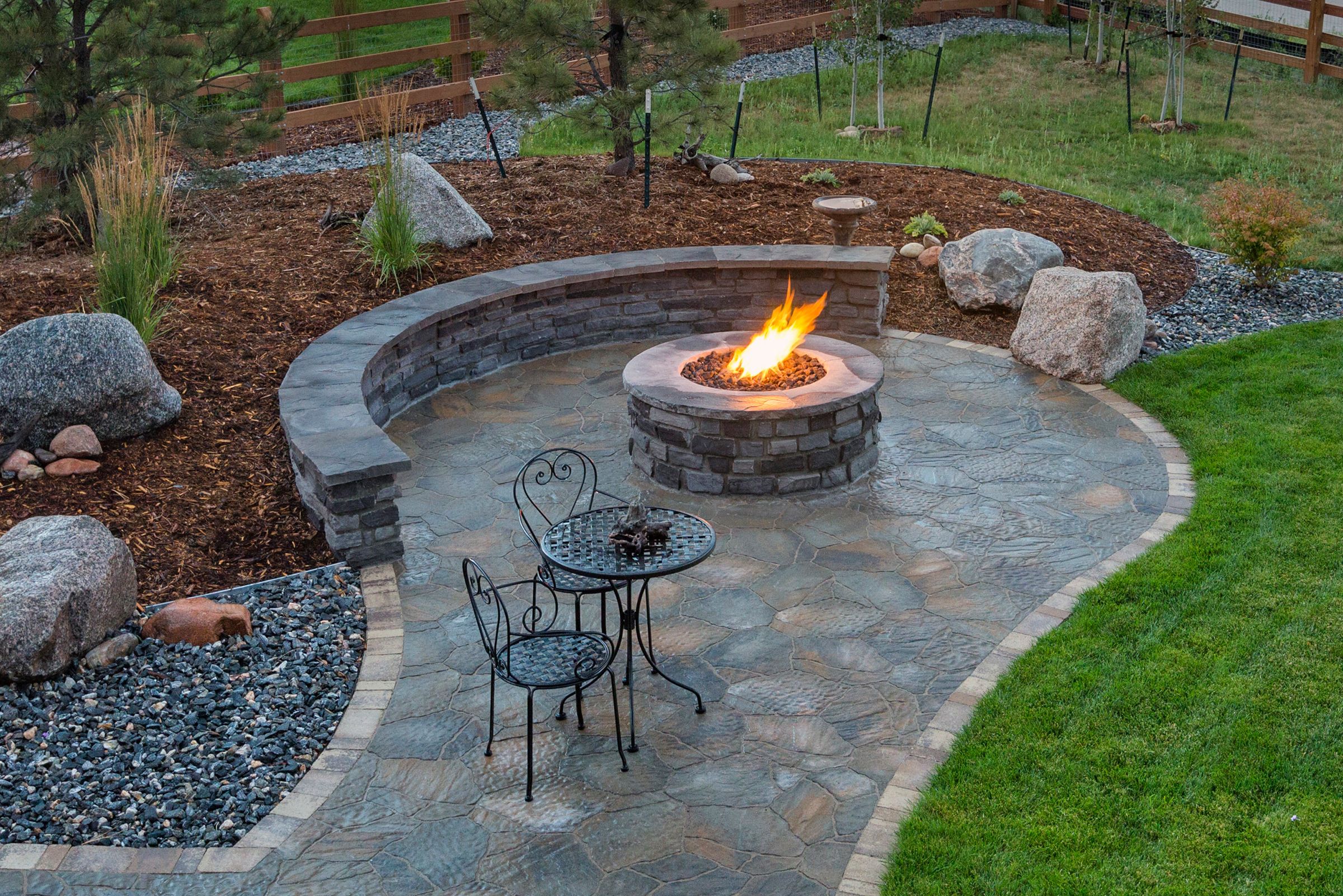
When designing your fire pit, prioritize safety by providing proper ventilation and using fire-resistant materials. Gauge your available space and local regulations when determining the size and location. Use comfortable seating, weather-resistant cushions, and ambient lighting to create an inviting atmosphere.
Whether you choose rustic stone or sleek metal to build your fire pit, use materials that complement your yard’s surrounding decor. Including a grill grate or cooking accessories can make it more functional.
See “How To Build a DIY Fire Pit” for full step-by-step instructions.
4. Weather-Resistant Planter
Custom-built planters allow you to add greenery to your outdoor space while complementing your home’s exterior design.
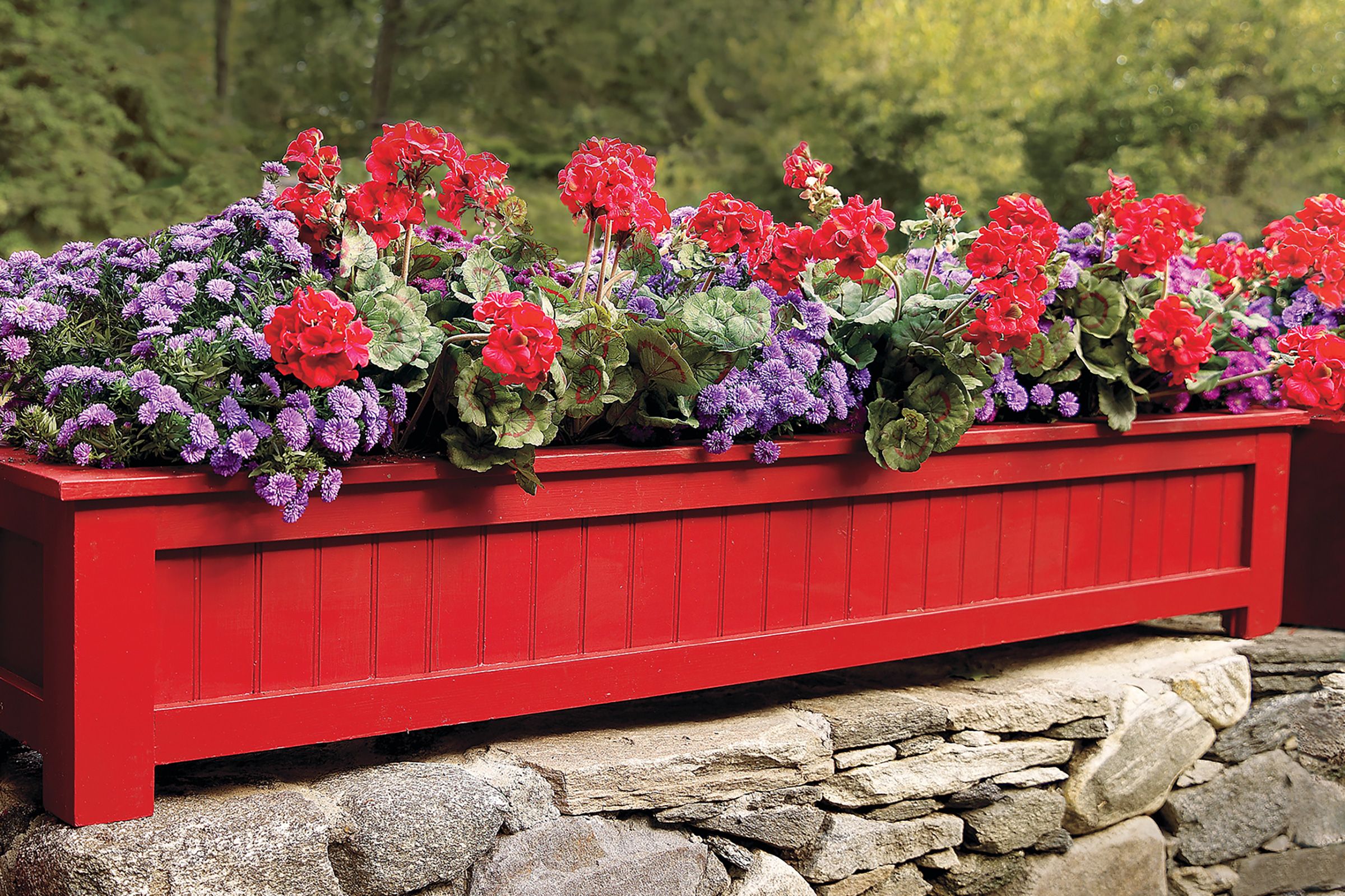
Cellular polyvinyl chloride (PVC) is ideal for making outdoor planters because it’s durable, resistant to rot, and easy to use. When building your planter, add decorative elements like beadboard detailing, and choose a paint color that complements your home’s exterior.
Incorporate tiered levels into your planter design so you can grow a variety of plants in one structure. Adding wheels or castors can provide more mobility, making it easier to reposition your planter to capture the best sunlight or protect it from harsh weather.
Incorporating a self-watering feature can make plant care easier. This can be achieved by creating a reservoir at the bottom of the planter and using wicking cords to draw water up to the soil.
See “How To Build a Self-Watering Planter” for full step-by-step instructions.
5. Landscaping Sitting Wall
A sitting wall can help define spaces, provide casual seating, and add architectural interest to your yard.
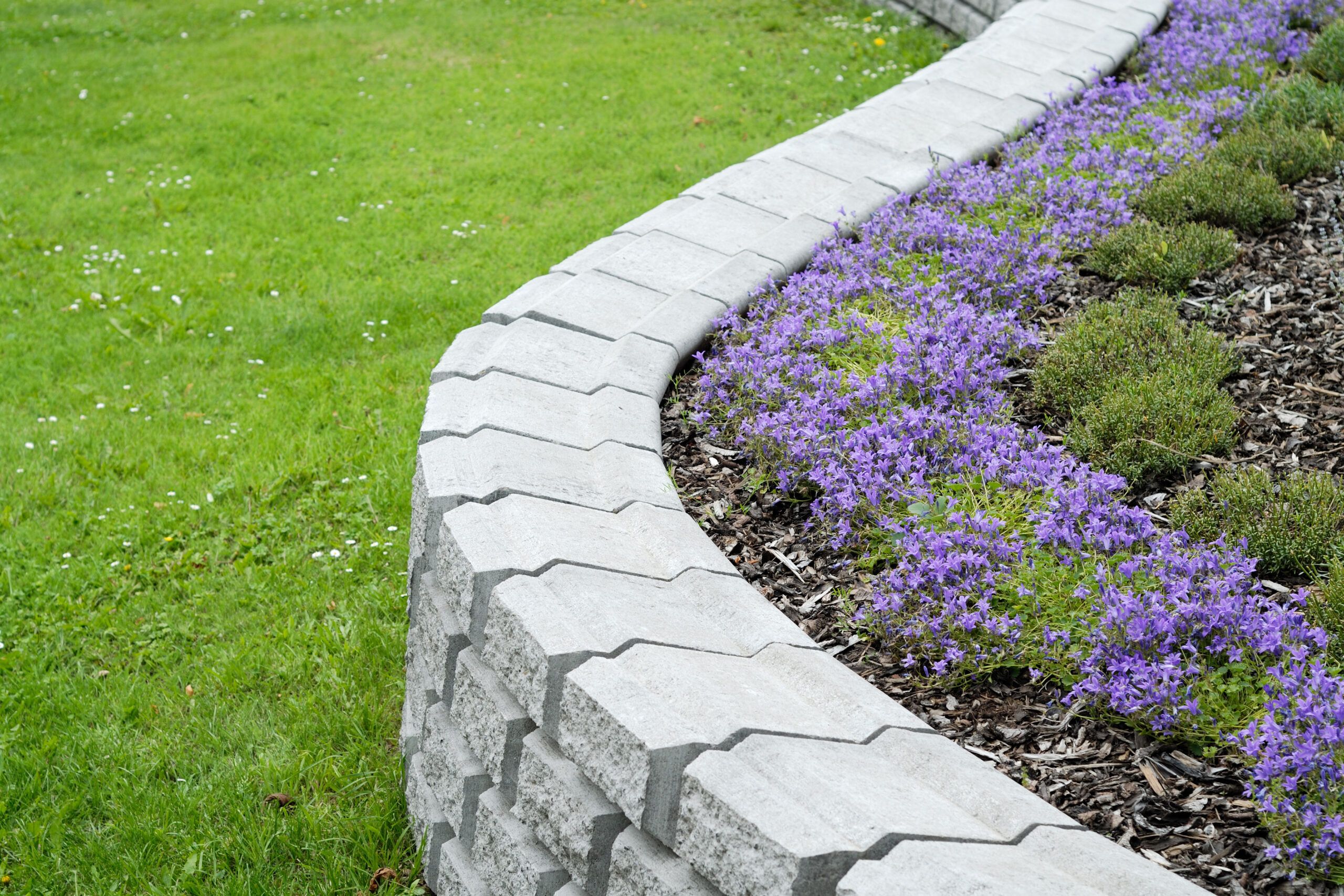
When planning your sitting wall, aim for a height between 18 and 24 inches for comfortable seating. Modern designs often use cast concrete blocks that mimic natural stone, offering durability and visual appeal.
Integrate your sitting wall with other garden elements like water features or fire pits to provide a cohesive look. Including planters along the top of the wall can add color and softness, while adding under-seat lighting can create a dramatic effect for evening gatherings.
Incorporate your sitting wall into existing landscape features, such as a patio outline, a frame for flower beds, or a cozy garden nook. Add cushions or throws for extra comfort and style.
See “How To Build a Concrete Sitting Wall” for full step-by-step instructions.
6. Garden Arbor
A garden arbor can be an elegant entryway to your garden or a support structure for climbing plants, adding vertical interest to your landscape.
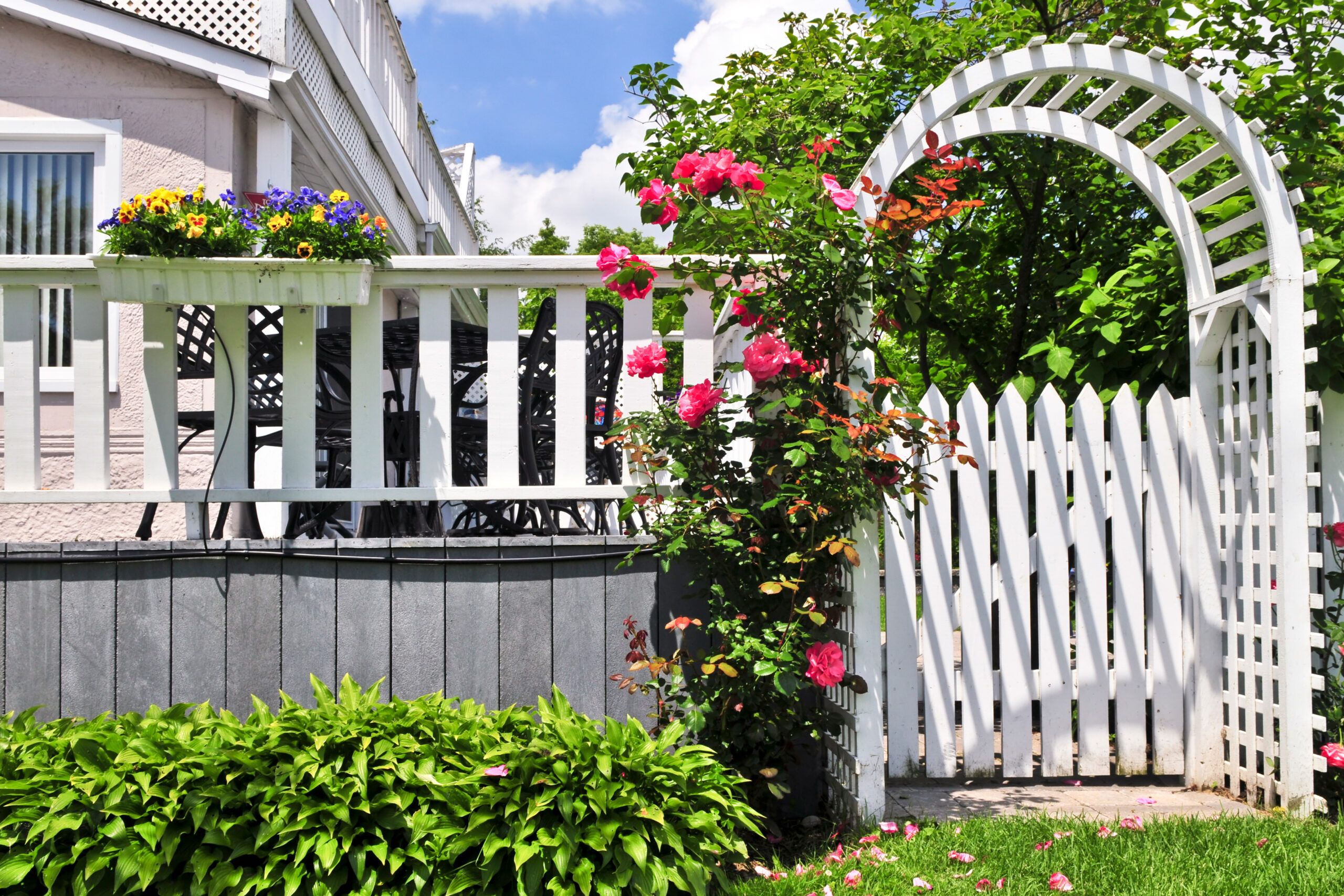
When designing your garden arbor, think about the overall style of your garden and choose a design that complements it. Whether you prefer a rustic look or a more polished appearance, make sure that the arbor’s height and width are proportionate to your space.
Think about integrating your garden arbor into pathways or garden entrances to improve the natural flow of your garden. Add gates or side panels for added structure and visual interest. Incorporate hanging lanterns or seasonal decorations to mix it up throughout the year.
Use materials that can withstand outdoor conditions, such as cedar or pressure-treated lumber. If you plan to grow climbing plants on your arbor, make sure it’s sturdy enough to support their weight as they mature.
7. Backyard Potting Bench
A potting bench is a crucial workspace for avid gardeners, providing a dedicated area for planting, repotting, and organizing gardening supplies.
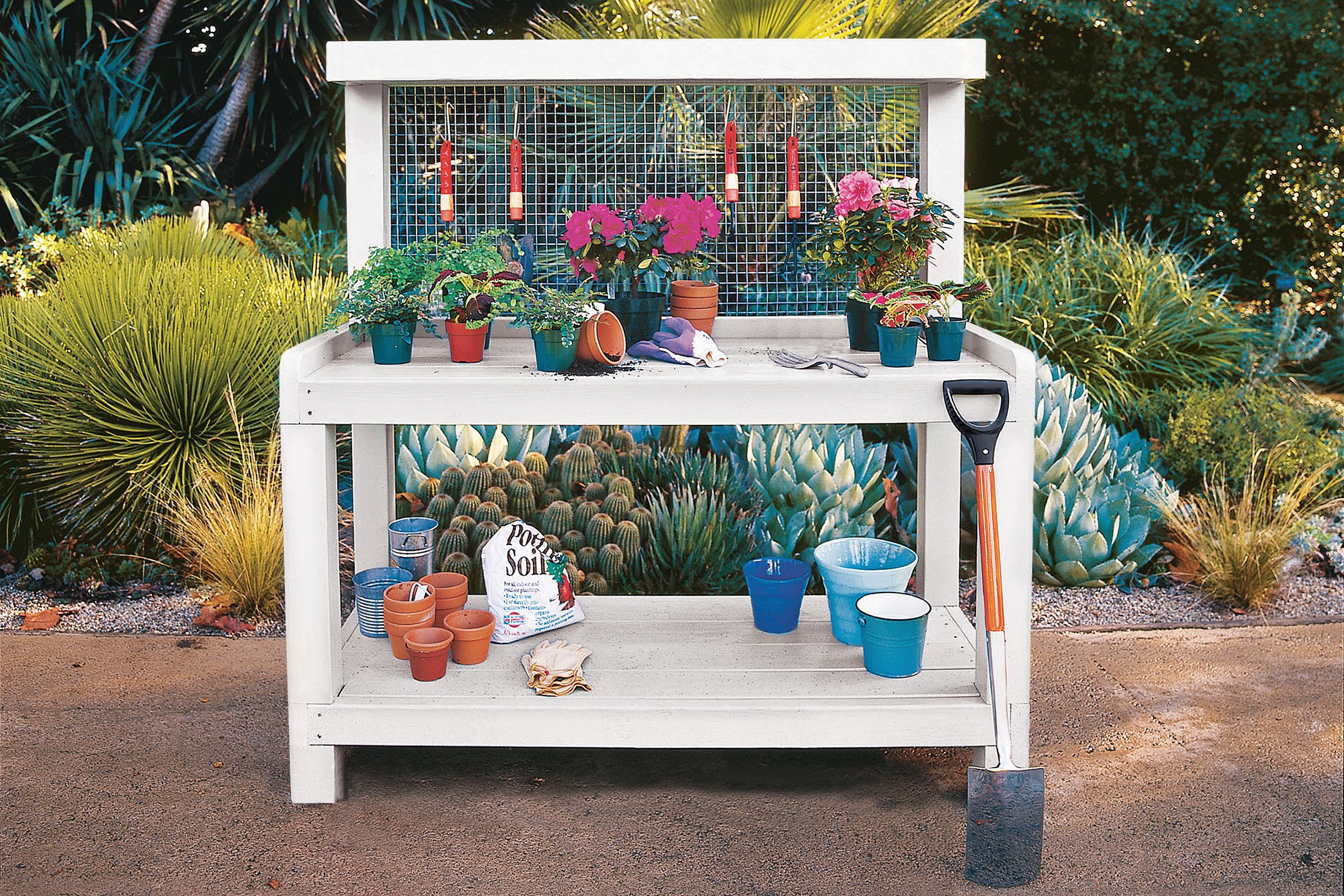
When building your potting bench, add features like a wire mesh backing for hanging tools, multiple shelves for storage, and a durable work surface. The bench’s height should be comfortable for extended use, typically around 36 inches.
Personalize your potting bench with hooks, storage bins, and labeling systems to keep your gardening supplies organized. Adding a chalkboard or whiteboard can provide a space for notes and reminders. Installing a built-in sink or running water can make washing tools and watering plants easier.
Choose weather-resistant materials like cedar or treated lumber to make sure your potting bench can withstand outdoor conditions. Adding wheels to the legs can make it mobile, so you can move it as needed.
Here’s “How To Build a Potting Bench” for full step-by-step instructions.
8. Planter Bench
A planter bench combines seating and gardening in one attractive package, making it ideal for smaller yards or patios where space is limited.
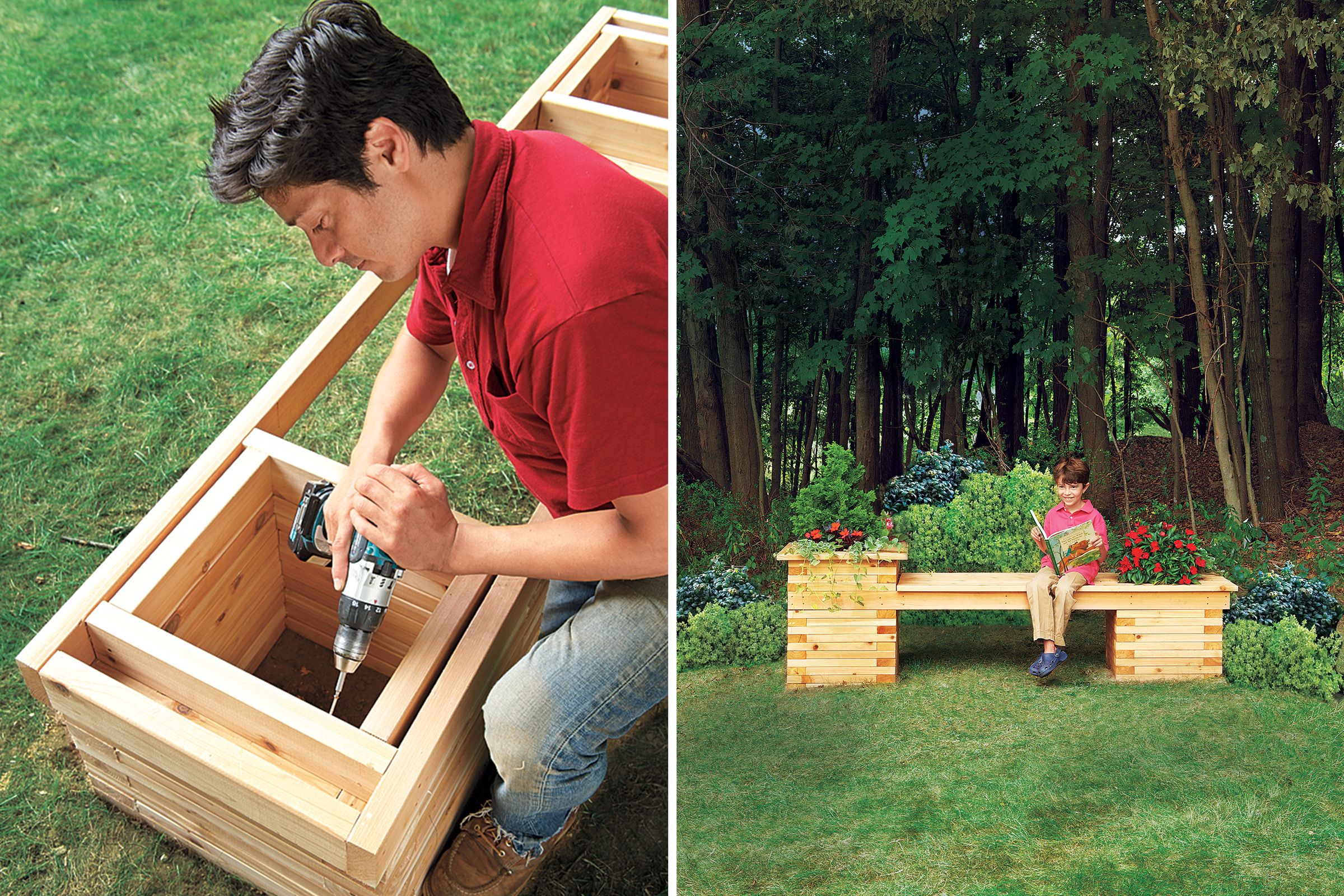
When designing your planter bench, use sturdy lap joinery to prevent the walls from bowing under the pressure of plant roots. Check the depth of the planters based on the types of plants you intend to grow—trees or large shrubs may require deeper containers.
Incorporating built-in seating cushions or creating a modular design that can be easily moved or expanded allows for greater versatility. Painting or staining the bench in colors that harmonize with your garden scheme can increase its visual appeal.
Choose a weather-resistant wood like cedar or teak for longevity. Consider adding colorful plants or seasonal blooms to brighten the area.
See “How To Build a Cedar Planter Box” for full step-by-step instructions.
9. Garden Fountain
A garden fountain adds a soothing element to your outdoor space, creating a focal point and improving the overall ambiance with the gentle sound of trickling water.
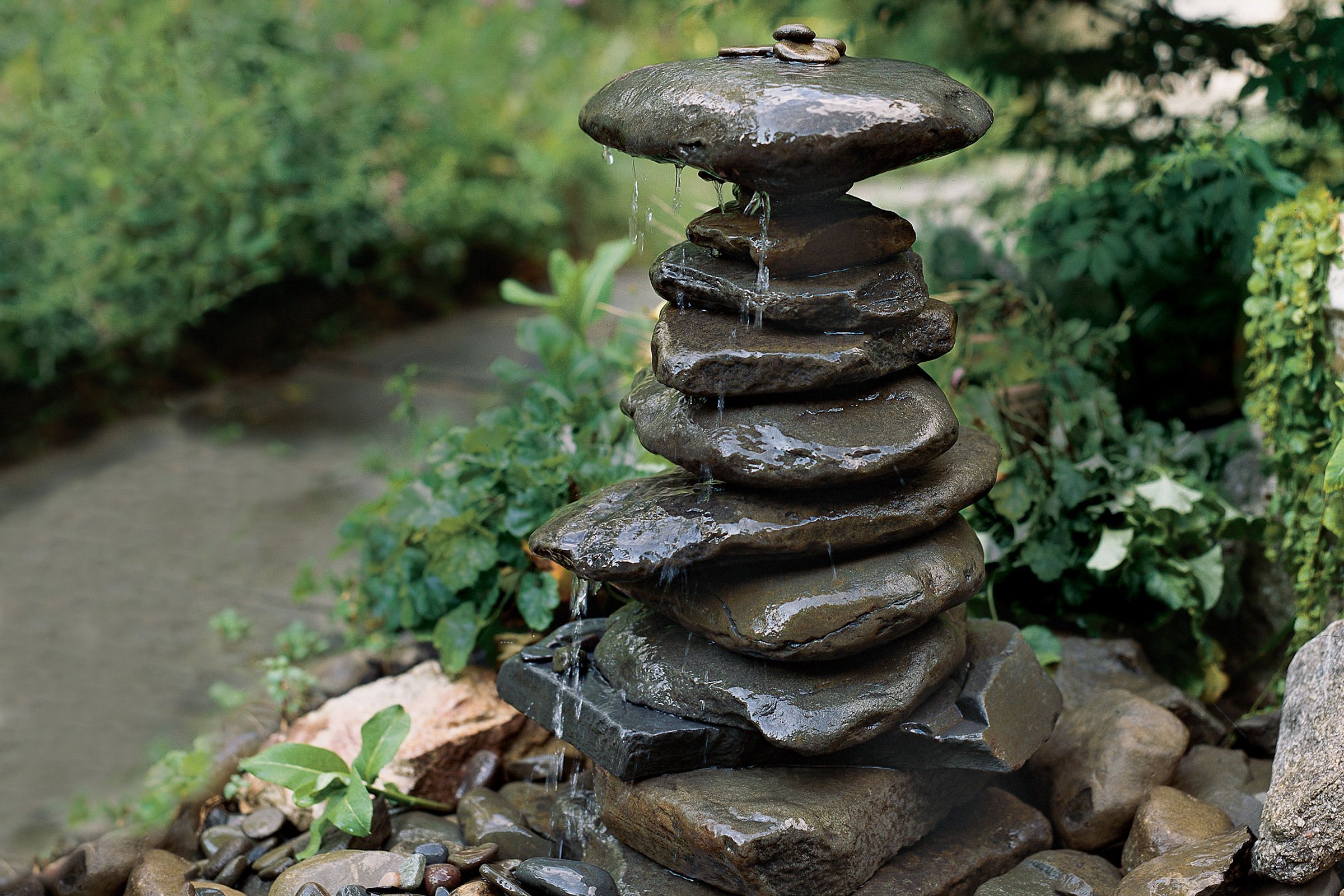
When designing your garden fountain, think through factors such as water flow, pump capacity, and electrical requirements. Choose materials that complement your landscape and are suitable for outdoor use, such as stone, ceramic, or copper.
Creating a layered or tiered design for your fountain can add a dynamic visual element. Including aquatic plants or fish can transform your fountain into a lively water garden. Adding places to sit nearby can help you relax and enjoy the serene sounds of the flowing water.
Position your fountain to create a focal point in your garden. Incorporate lighting to highlight the water feature at night, creating a magical atmosphere in your outdoor space.
See “How To Build a Fountain” for full step-by-step instructions.
10. Adirondack Chair
The Adirondack chair is a classic piece of outdoor furniture known for its comfortable, reclined seating position and wide armrests.
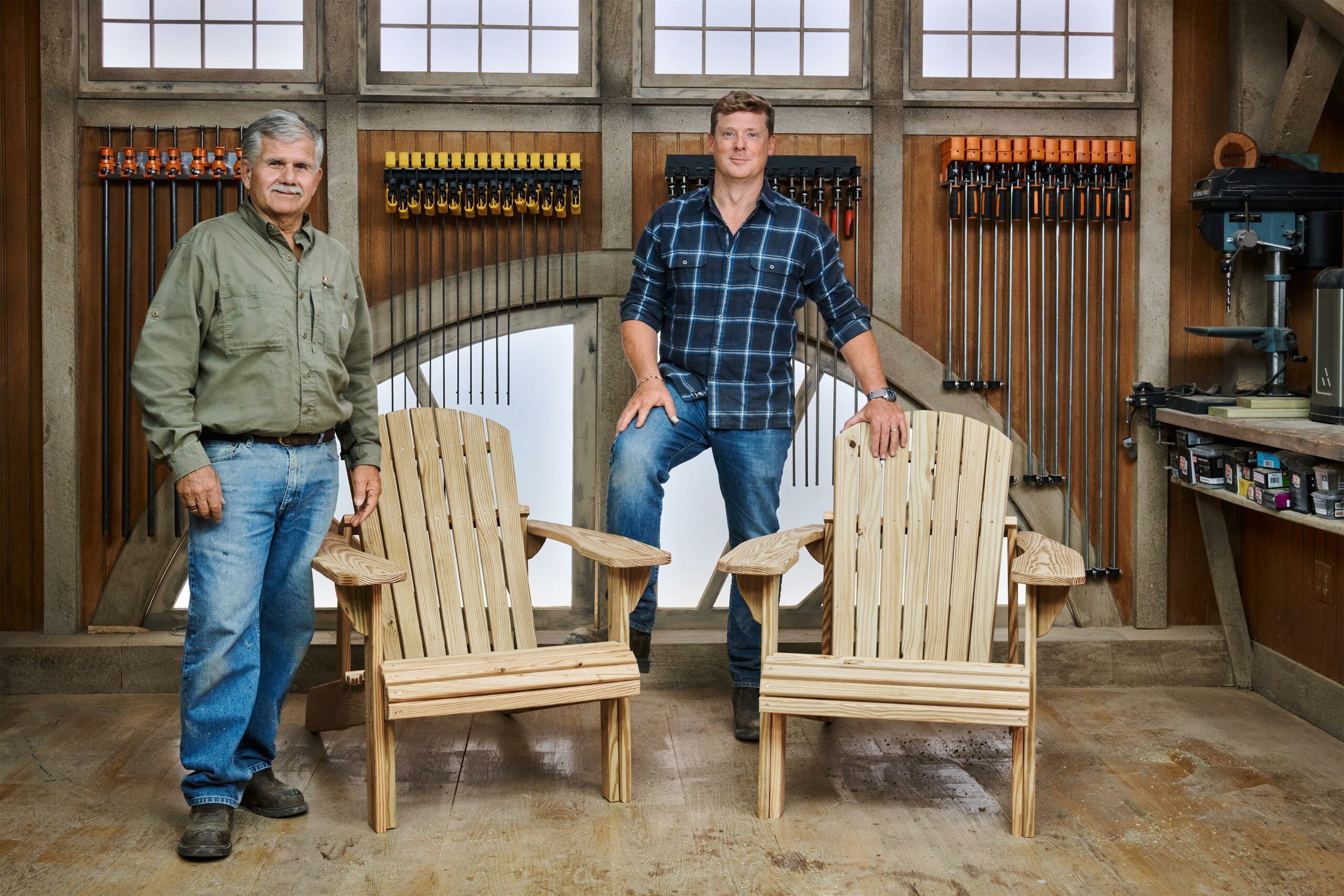
When building an Adirondack chair, focus on the angles of the seat and back for maximum comfort. Choose weather-resistant wood like cedar, teak, or treated pine for durability. Add features like a cup holder or a matching footstool for extra convenience and comfort.
Personalizing your Adirondack chair with unique details such as engraved initials or custom paint designs can make it a distinctive part of your outdoor decor. Include complementary accessories like side tables or coordinated cushions.
See “How To Build an Adirondack Chair” for full step-by-step instructions.
11. Home Grilling Station
A well-designed grilling station can elevate your outdoor cooking and entertaining experience.
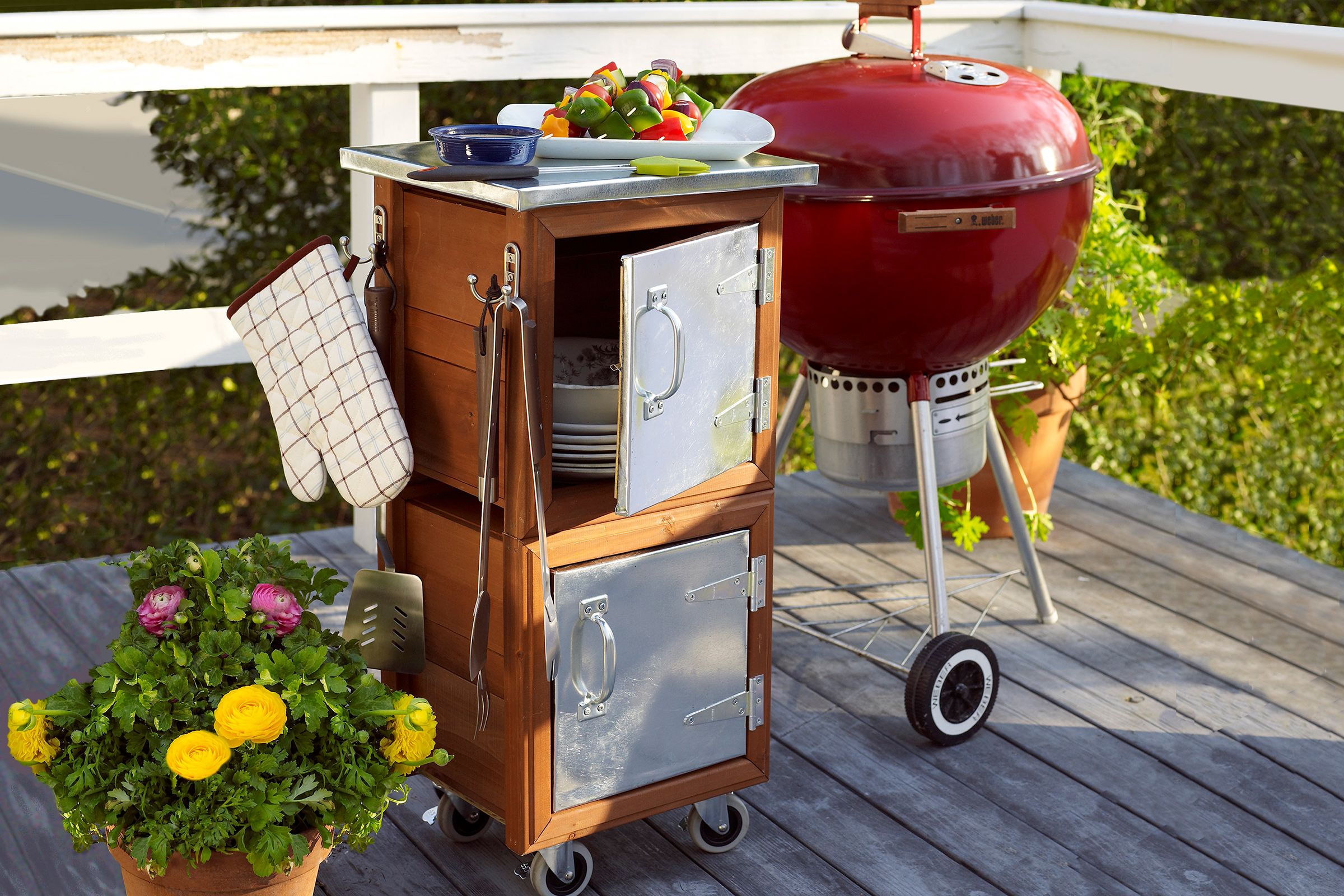
When planning your grilling station, check its proximity to your home, prevailing wind direction, and available space. Opt for durable, weather-resistant materials like stone, concrete, or treated wood that can withstand heat and outdoor conditions.
Incorporate additional features, such as storage for propane tanks or specialized holders for grilling tools, to make the station more functional. Consider creating a cozy dining nook to make it easier to serve and enjoy meals right off the grill. Integrate ambient lighting or a sound system to turn your grilling station into a central hub for outdoor gatherings. Add extras like a built-in cooler, a sink for easy cleanup, or a pergola for shade.
See “How To Build a Grilling Station” for full step-by-step instructions.
12. Garden Bench
A garden bench provides a comfortable resting spot and a vantage point to enjoy your yard, adding both functionality and charm to your outdoor space.

When building a garden bench, use durable materials like cedar, teak, or treated pine. Design the bench with a contoured seat and backrest to improve comfort. Add decorative elements like carved details or a custom paint finish to personalize your bench.
Place the bench near flowering plants or near a water feature to create a serene retreat. Adding an arbor or pergola overhead can provide shade and a sense of enclosure, making it a perfect relaxation spot. Seasonal decorations like throw pillows or blankets can add to its charm through the different seasons.
Position your garden bench in shaded areas or near flowering plants to create inviting spots throughout your yard. Adding cushions or throws can make the bench even more comfortable and visually appealing.
See “How To Build a DIY Garden Bench” for full step-by-step instructions.
13. Pyramid Trellis
A pyramid trellis, also known as an obelisk or tuteur, adds vertical interest to your garden while providing support for climbing plants.
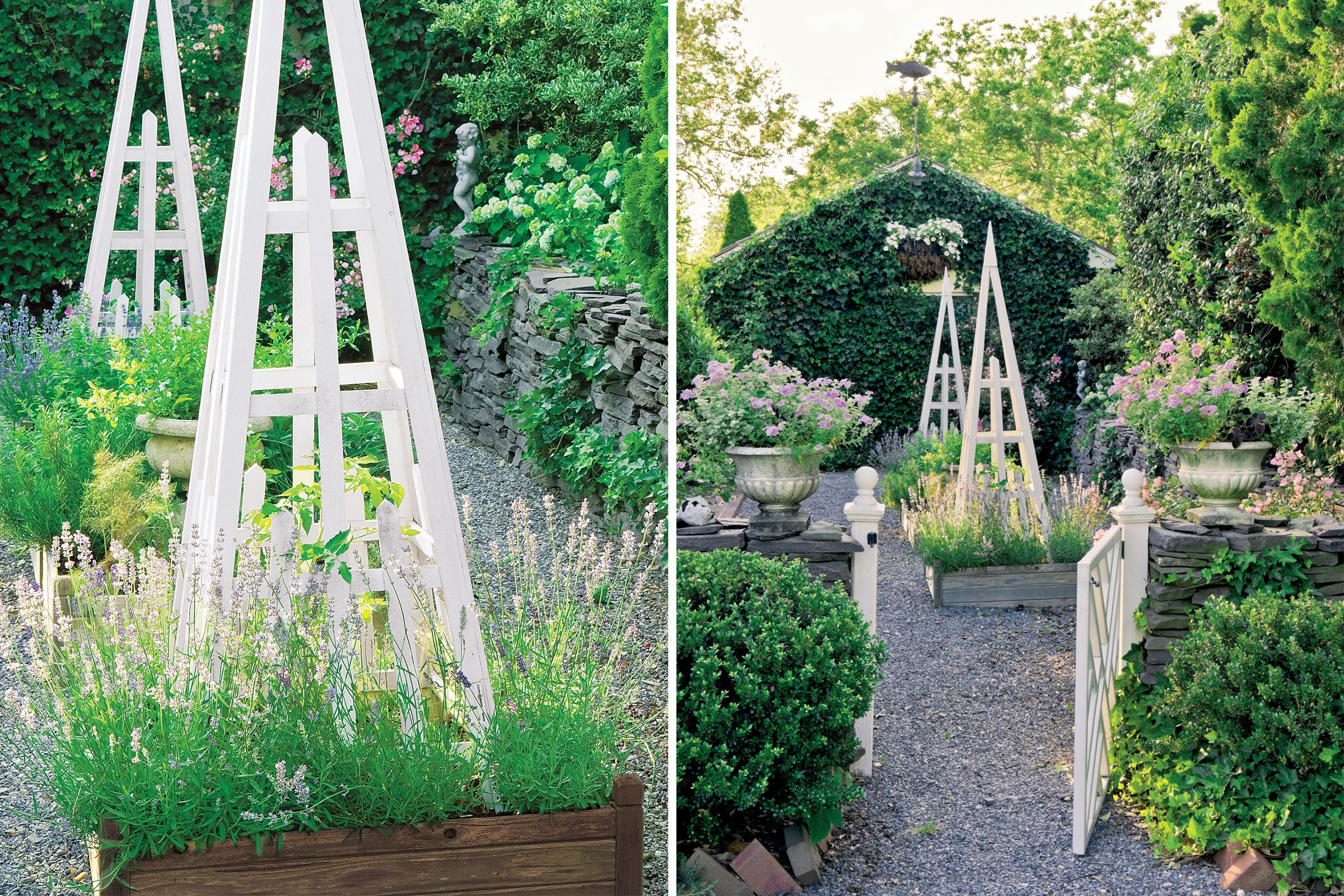
When building a pyramid trellis, focus on precise angles and proportions for both stability and visual appeal. Choose the design based on the types of plants you plan to grow, making sure they provide adequate support as they mature.
You can paint or stain the trellis to stand out as a garden focal point or blend in with other garden structures. Adding decorative finials or caps to the top of the trellis can create a polished look. Using twines or netting can provide extra support for lighter plants and add a visual touch.
Use materials that complement your garden’s style, such as wood for a natural look or metal for a more modern style. Position your pyramid trellis as a focal point in a flower bed, or use multiple trellises to create a dramatic entrance to a garden area.
14. Porch Swing
A porch swing is a timeless addition to any outdoor space, providing a comfortable retreat to enjoy fresh air and relaxation.
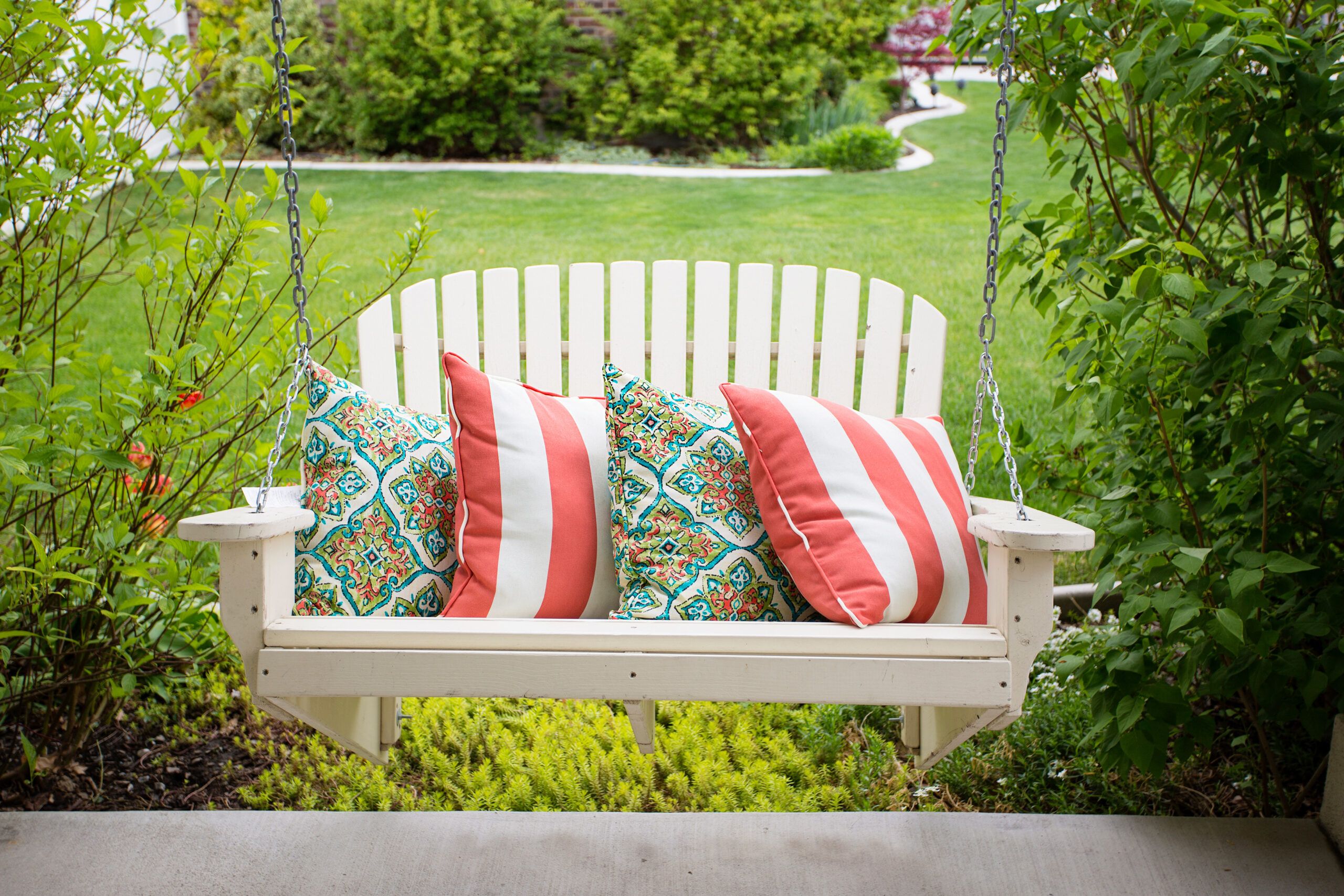
When building a porch swing, use durable materials like teak or cedar to withstand outdoor conditions. Make sure the hanging mechanism is secure for safety and stability. Factor in the size of your porch or patio when determining the swing’s dimensions.
Customize your porch swing with painted designs or engravings to add a personal touch. Consider placing side tables or planters nearby. Integrating a canopy or curtain adds privacy and protection from the elements, allowing you to enjoy the swing regardless of the weather.
Add cushions or pillows for extra comfort. Remember to apply a weather-resistant finish to protect the wood and maintain its appearance.
See “How To Build and Hang a Porch Swing” for full step-by-step instructions.
15. Outdoor Bar Cart
An outdoor bar cart is perfect for transporting drinks and snacks to improve your outdoor entertaining experience.
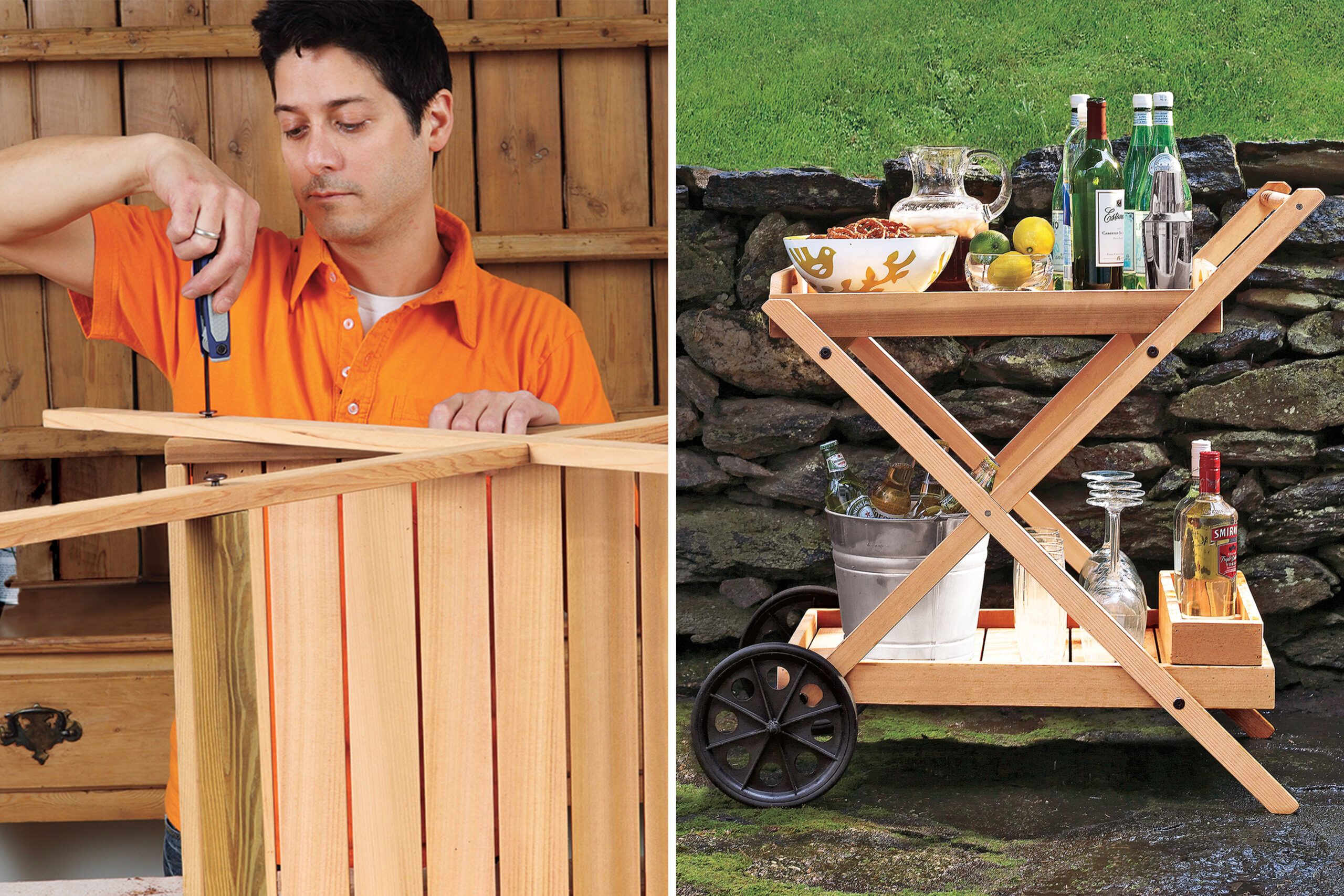
When designing your bar cart, include features like a built-in ice bucket, wine glass racks, or a towel bar. Use weather-resistant materials such as teak, cedar, or marine-grade plywood for durability. Add locking casters for stability and mobility.
Further personalize your bar cart with colorful paint or waterproof decals to match your outdoor decor. Add lighting elements for evening use, or integrate a small herb garden for fresh garnishes. Include weather-resistant covers to protect your bar cart when not in use.
See “How To Build an Outdoor Bar Cart” for full step-by-step instructions.
16. Diamond-Patterned Twig Trellis
A diamond-patterned twig trellis adds a natural, artistic touch to your garden while supporting climbing plants.
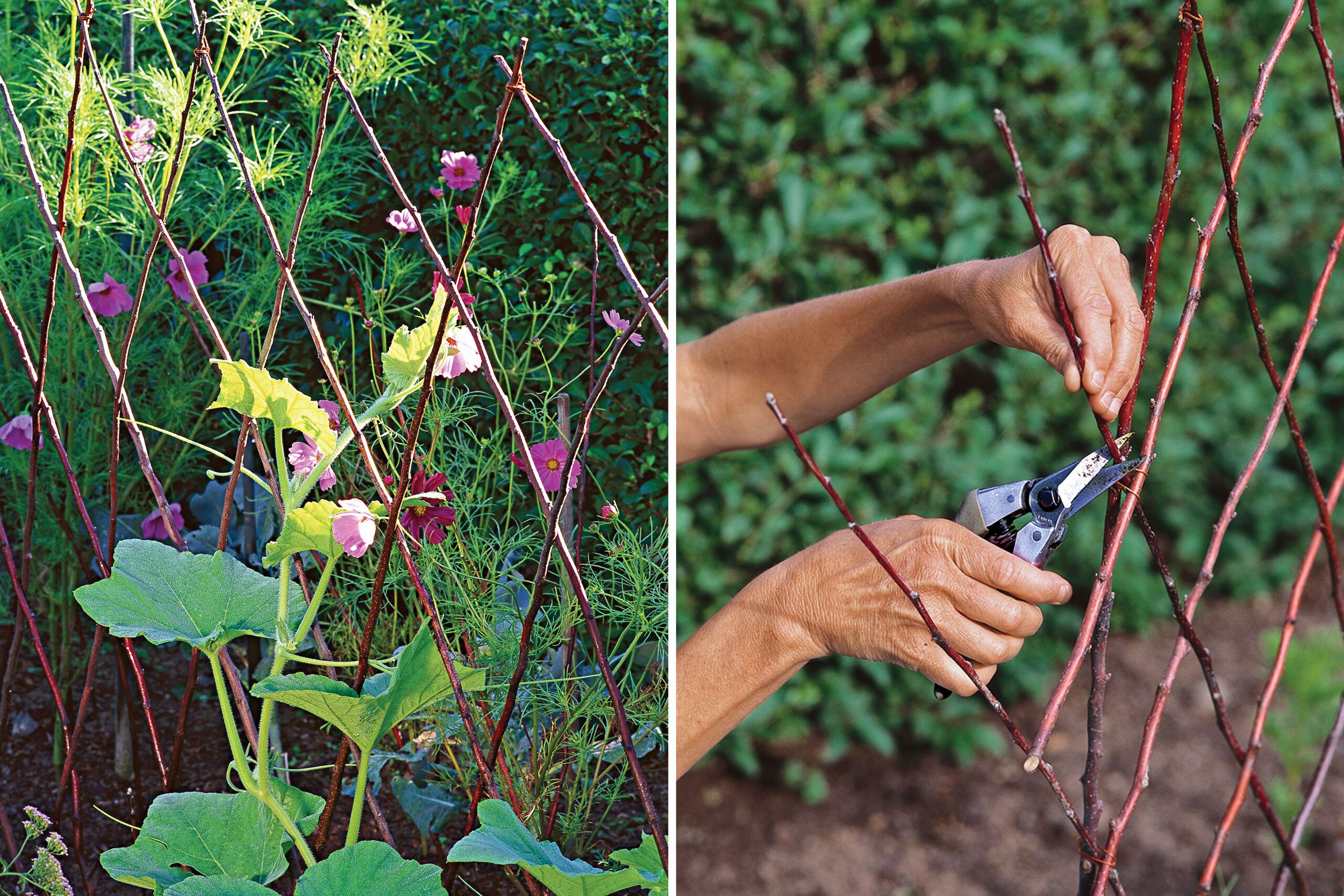
When creating a twig trellis, use straight branches from early spring pruning, such as willow, hazel, or birch, for their flexibility and durability. Arrange the twigs in a diamond pattern, securing them with natural twine or wire.
Adding a varnish or paint can help preserve the twigs and add a finished look to your trellis. Use twine or mesh between the twig intersections to create additional support for climbing plants. Position the trellis against fences or walls for extra stability and a neat appearance.
Size the trellis appropriately for the weight of the plants you plan to grow. Create multiple twig trellises to form a decorative screen or to define different areas in your garden.
See “How To Build a Diamond-Patterned Twig Trellis” for full step-by-step instructions.
17. Tree Bench
A tree bench wraps around the trunk of a tree, offering a cozy, shaded seating area while protecting the tree’s roots.
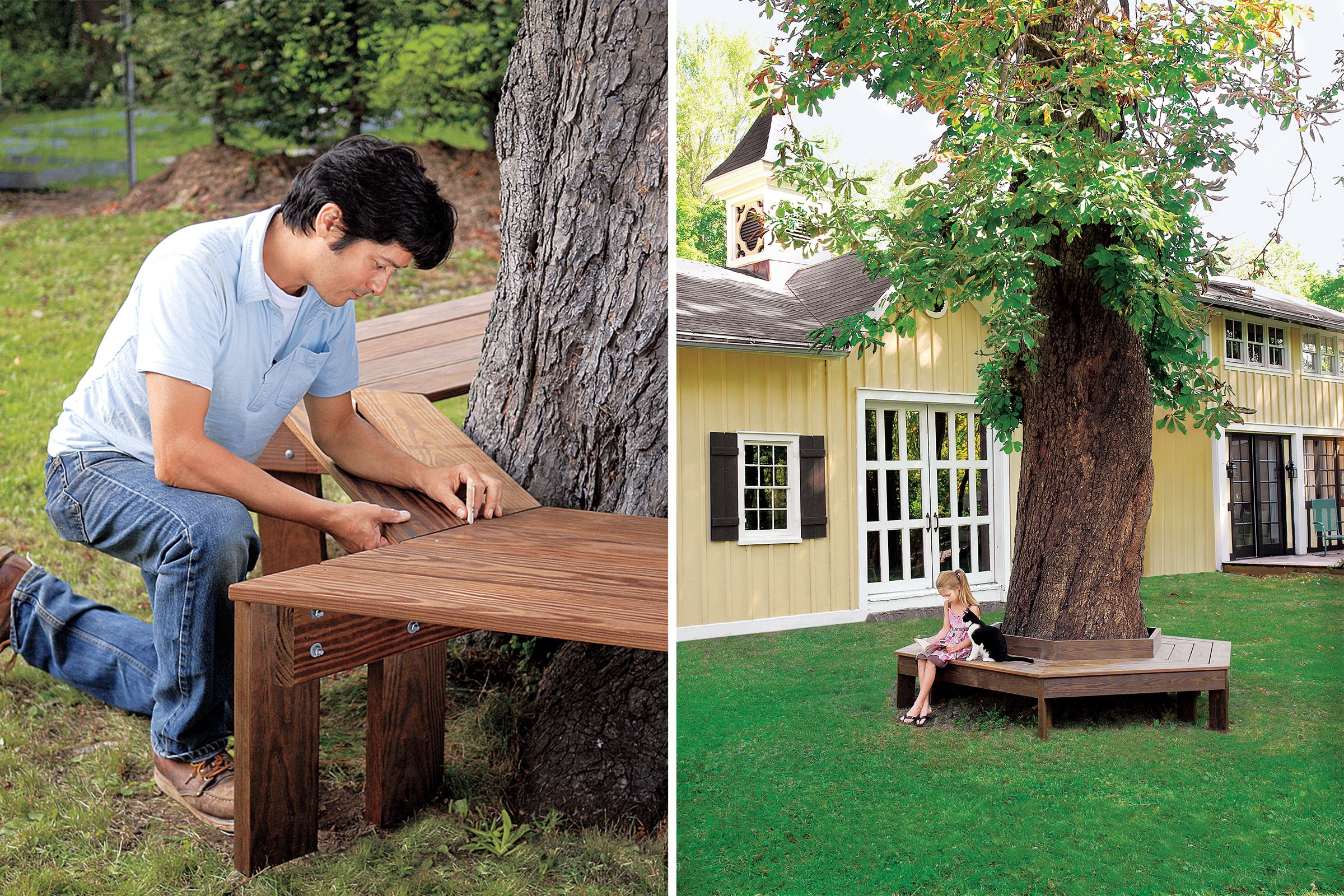
When designing a tree bench, leave enough space around the trunk to accommodate tree growth. Incorporate a slight slope in the seat to facilitate water drainage. Use weather-resistant materials like cedar or teak for longevity.
To increase the comfort and style of your tree bench, add decorative railings or backrests. Positioning garden statues or flower pots near your bench can create a charming and tranquil atmosphere. Installing lighting around the tree bench can make it usable during nighttime.
Factor in the tree’s size and growth rate when planning your bench. Add cushions or pillows for extra comfort, and incorporate built-in storage under the seat for garden tools or outdoor accessories.
18. Picnic Table
A picnic table is a versatile outdoor furniture piece that provides ample seating for family meals and gatherings.
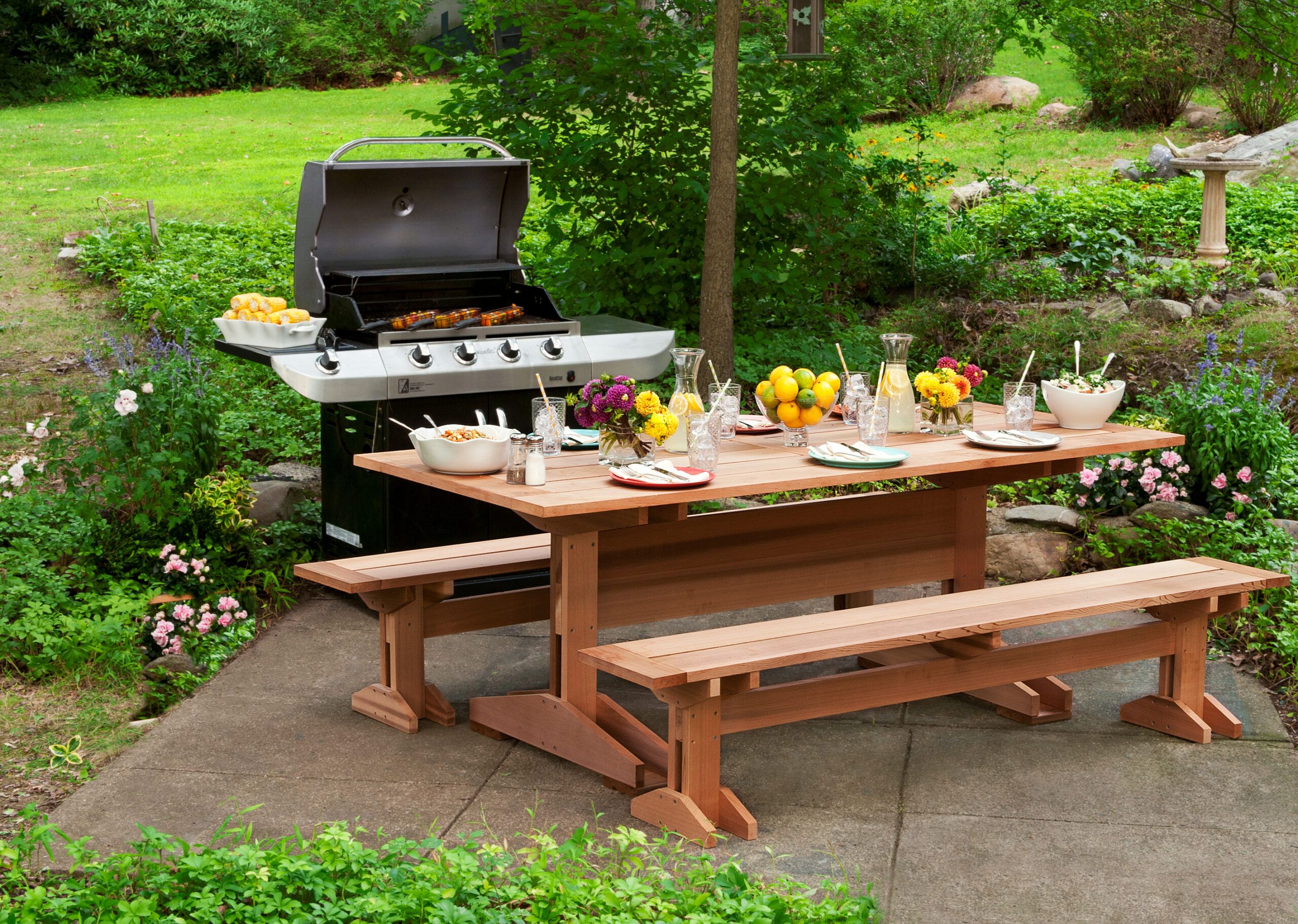
When building a picnic table, opt for durable materials like pressure-treated lumber or cedar for better longevity. Carefully select the table’s dimensions for comfortable seating and easy access. Add features like umbrella holes or built-in benches for extra functionality.
You can personalize your picnic table with a colorful paint job or wood stains that match your outdoor decor. Including folding features for benches adds flexibility, allowing for easy storage during unfavorable weather. Adding hooks for hanging bags or hats beneath the table can provide extra convenience.
Apply a weatherproof seal to protect your picnic table from the elements. You can also customize the table with paint or stain to match your outdoor decor.
See “How To Build a Picnic Table and Benches” for full step-by-step instructions.
19. Lattice Trellis
A lattice trellis supports climbing plants and adds visual appeal to your outdoor space. You can use it to create privacy, define garden areas, or introduce vertical elements to your landscape.
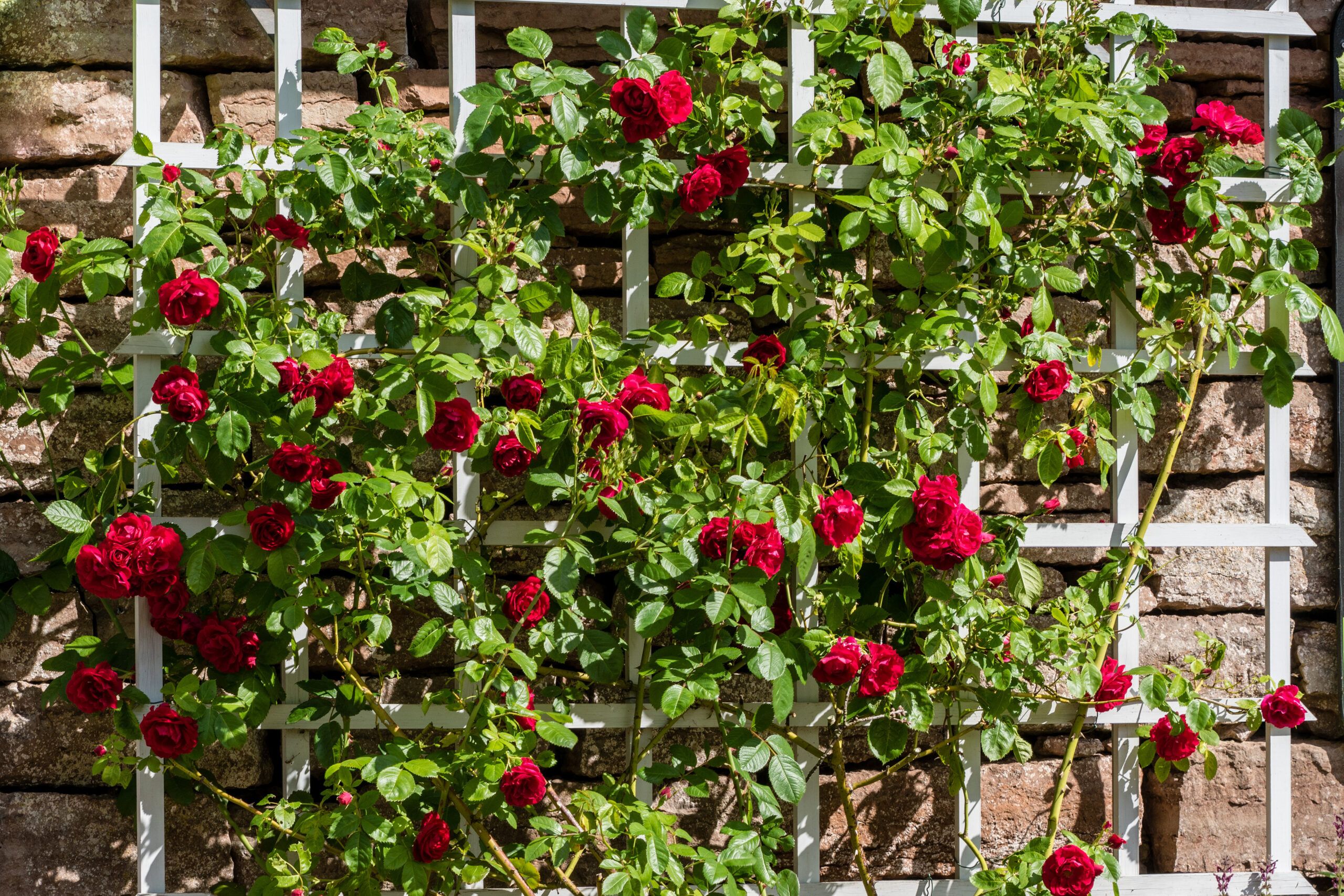
When building, use weather-resistant materials like cedar or vinyl-coated metal. Choose materials based on the size and weight of the plants you plan to grow.
You can personalize your lattice trellis by painting it in colors that match your garden’s appearance. Using multiple lattice panels together can create a full-fledged garden screen for additional privacy. Including integrated planters at the base of the trellis can add a splash of greenery.
Explore different lattice patterns, from classic diamond shapes to modern designs, to suit your garden’s style.
See “How To Build a Wire Trellis” for full step-by-step instructions.
